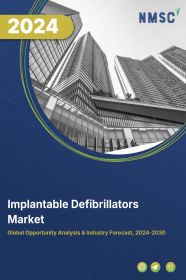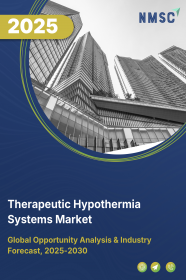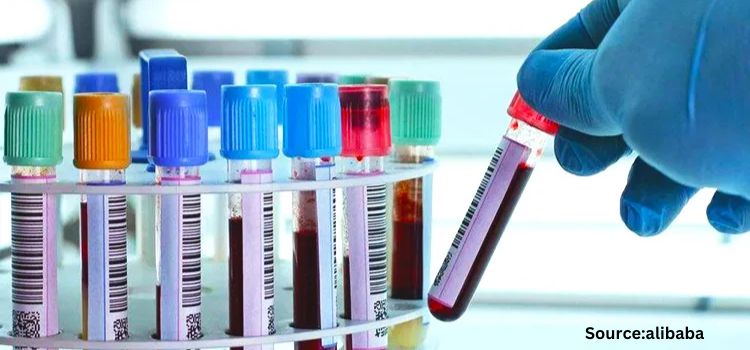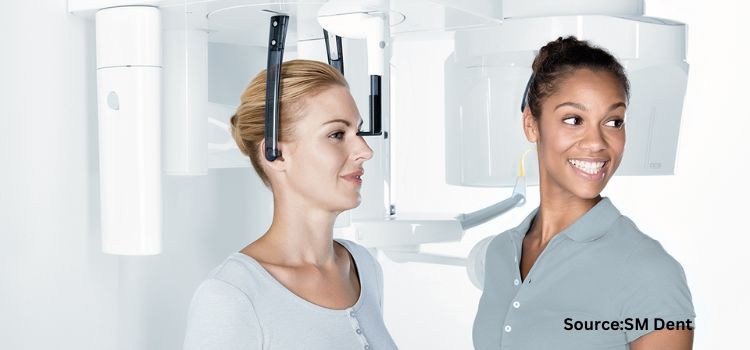
Implantable Defibrillators Market byType (Single Chambered, Double Chambered, Biventricular Chambered), Procedure Type (Transvenous Implantable Cardioverter-Defibrillator (T-ICDs), Subcutaneous Implantable Cardioverter Defibrillators (S-ICDS), Cardiac Resynchronization Therapy Defibrillator (CRT-D)), End User (Hospitals, Specialty Clinics, Ambulatory Surgical Centers) - Global Opportunity Analysis and Industry Forecast, 2020 – 2030
Industry: Healthcare | Publish Date: 27-Nov-2024 | No of Pages: 320 | No. of Tables: 162 | No. of Figures: 102 | Format: PDF | Report Code : HC61
US Tariff Impact on Implantable Defibrillators Market
Trump Tariffs Are Reshaping Global Business
Market Definition:
The Global Implantable Defibrillators Market was valued at USD 7.35 billion in 2019 and is expected to garner USD 11.44 billion by 2030, registering a CAGR of 4.1% during the forecast period 2020 - 2030.
Implantable defibrillator is a device powered by a tiny battery that is placed in the chest of a patient in order to monitor the heartbeat and prevent sudden cardiac arrest by delivering shocks at times of abnormal heart beat. The electric shocks delivered by implantable defibrillators depolarizes heart muscles and restores the normal heart rhythm. This device is recommended to people, who have survived one or more cardiac arrest and with persisting problem of irregular heartbeats even after proper medications.
Market Dynamics and Trends:
Globally, it has been observed that the maximum causes of deaths are caused due to heart diseases. The rapid increase in the geriatric population and upraised risk of cardio vascular diseases are the key drivers of implantable defibrillator market growth. Moreover, the exposure of new technology and increase in adoption of implantable defibrillators will lead to spontaneous growth of the defibrillator market.
On the contrary, the risk factors like infection in the implanted area, sudden damage to the veins where ICD leads are placed, bleeding around the heart are some factors that hinders the growth of implantable defibrillator market. However, the increasing population along with the rising mortality due to cardiac arrests and other heart disease will provide ample opportunities for the implantable heart defibrillator market players to grow and flourish globally.
Market Segmentations and Scope of the Study:
The implantable defibrillators market is segmented on the basis of type, procedure type, end user and geography. On the basis of type, market is divided into single chambered, double chambered, biventricular chambered. On the basis of procedure type, market is divided into transvenous implantable cardioverter-defibrillator (T-ICDs), subcutaneous implantable cardioverter defibrillators (S-ICDS), cardiac resynchronization therapy defibrillator (CRT-D). On the basis of end user, market is divided into hospitals, specialty clinics, ambulatory surgical centers. Geographically, the market is spread across North America (U.S., Canada, and Mexico), Europe (Germany, France, UK, Italy, Spain, and rest of Europe), Asia-Pacific (Japan, China, India, Australia, and rest of Asia-Pacific), and rest of the world (RoW).
Geographical Analysis:
North America dominates the Implantable Defibrillators market as a result of better and advanced medical facilities as well as healthcare centres, compared to other regions. Also, the rising mortality rate due to heart diseases in this region is another underlying factor contributing to the adoption of implantable defibrillators.
The Asia Pacific region is predicted to show consistent growth in terms of market share within the forecast period as the manufacturers of this region are focusing on introducing advanced but cost-effective defibrillator devices to meet the needs of the dense and rapid growing population of this region. Moreover, the unhealthy life style of the people in this region like lack of exercise, consumption of excess oil and spices with food, cigarette smoking and absence of balanced diet leading to increase in cholesterol levels, resulting in cardiovascular diseases will provide ample opportunities for the implantable defibrillators market to grow in the coming years.
Competitive Landscape:
The key players operating in the global implantable defibrillators market include Boston Scientific Corporation, LivaNova PLC Company, Imricor Medical Systems, MicroPort Scientific Corporation, Mayo Clinic US, Medtronic plc, MRI Interventions, Inc., St. Jude Medical, Inc., Biotronik Se & Co.KG, and Sorin Group.
Key Benefits:
-
Comprehensive analysis of all geographical regions is provided to determine the prevailing opportunities.
-
Comprehensive analysis of factors that drive and restrict the implantable defibrillators market growth is provided in the report.
-
This report provides an extensive analysis of the current & emerging market trends and dynamics in the global implantable defibrillators market.
-
Region- and country-wise market conditions are analysed in the report.
Key Market Segments:
By Type
-
Single Chamber
-
Double Chambered
-
Biventricular Chambered
By Procedure Type
-
Subcutaneous Implantable Cardioverter Defibrillators (S-ICDS)
-
Transvenous Implantable Cardioverter-Defibrillator (T-ICDs)
-
Cardiac Resynchronization Therapy Defibrillator (CRT-D)
By End User
-
Hospitals
-
Speciality Clinics
-
Ambulatory Surgical Centers
By Geography
-
North America
-
U.S.
-
Canada
-
Mexico
-
-
Europe
-
Germany
-
France
-
UK
-
Italy
-
Spain
-
Rest of Europe
-
-
Asia-Pacific
-
Japan
-
China
-
Australia
-
India
-
Rest of Asia-Pacific
-
-
RoW
-
Brazil
-
Argentina
-
Egypt
-
Israel
-
South Africa
-
Rest of RoW
-
Key Players:
-
Boston Scientific Corporation
-
LivaNova PLC Company
-
Imricor Medical Systems
-
MicroPort Scientific Corporation
-
Mayo Clinic US
-
Medtronic plc
-
MRI Interventions Inc.
-
St. Jude Medical Inc.
-
Biotronik Se & Co.KG
-
Sorin Group
REPORT SCOPE AND SEGMENTATION:
|
Parameters |
Details |
|
Analysis Period |
2019–2030 |
|
Base Year Considered |
2020 |
|
Forecast Period |
2020–2030 |
|
Market Size Estimation |
Billion (USD) |
|
Market Segmentation |
By Type (Single Chambered, Double Chambered, Biventricular Chambered), Procedure Type (Transvenous Implantable Cardioverter-Defibrillator (T-ICDs), Subcutaneous Implantable Cardioverter Defibrillators (S-ICDS), Cardiac Resynchronization Therapy Defibrillator (CRT-D)), End User (Hospitals, Specialty Clinics, Ambulatory Surgical Centers) |
|
Geographical Segmentation |
North America (U.S., Canada, Mexico) Europe (UK, Germany, France, Italy, Spain, Rest of Europe), Asia-Pacific (China, Japan, India, Australia, Rest of APAC), Rest of the World (Brazil, Argentina, Egypt, Israel, South Africa, Remaining Countries) |
|
Companies Profiled |
Boston Scientific Corporation, LivaNova PLC Company, Imricor Medical Systems, MicroPort Scientific Corporation, Mayo Clinic US, Medtronic plc, MRI Interventions, Inc., St. Jude Medical, Inc., Biotronik Se & Co.KG, and Sorin Group. |

















 Speak to Our Analyst
Speak to Our Analyst





















